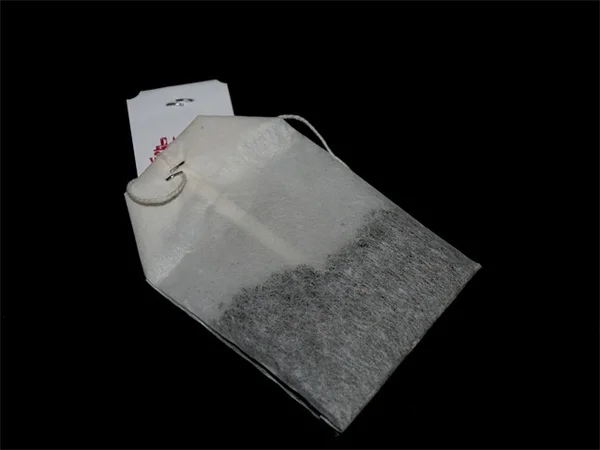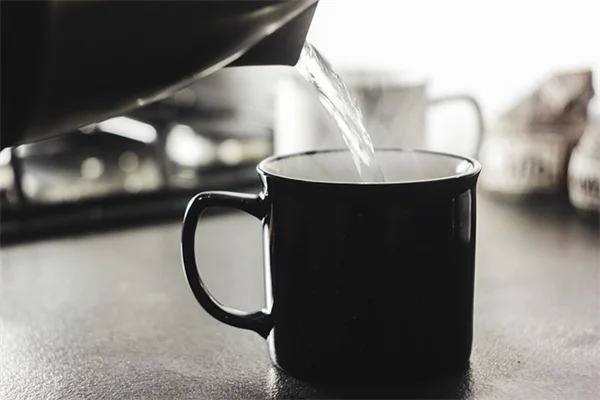Advertisement
Can exercise really slow down muscle aging? The answer is absolutely yes - and science now shows us exactly how! Recent research reveals that a specific lipid called BMPs accumulates in aging muscles, but here's the exciting part: just four days of exercise can significantly reduce these aging markers.We've all noticed how our muscles don't bounce back like they used to in our 20s. Well, BMPs might be part of that story. These molecules increase as we age and have been linked to everything from metabolic disorders to neurodegenerative diseases. But before you panic about getting older, let me share the game-changing discovery - regular physical activity actually lowers BMP levels in your muscle tissue!In this article, we'll break down the fascinating science behind BMPs and aging, explain exactly how exercise works its magic at the molecular level, and give you practical tips to incorporate these findings into your daily routine. Whether you're a fitness enthusiast or just starting out, understanding this connection could be your secret weapon for maintaining youthful muscles longer.
E.g. :Sleep Deprivation Crisis: Why 57% of Americans Aren't Getting Enough Rest
- 1、Exercise: Your Secret Weapon Against Aging Muscles
- 2、Why Your Muscles Love Exercise (And So Should You)
- 3、Beyond BMPs: The Bigger Picture of Healthy Aging
- 4、Putting Research Into Action: Your Next Steps
- 5、The Hidden Science Behind Your Workout Motivation
- 6、Exercise Hacks Your Gym Teacher Never Told You
- 7、When Life Gets in the Way: Real Solutions
- 8、The Future of Fitness: What's Coming Next
- 9、FAQs
Exercise: Your Secret Weapon Against Aging Muscles
Meet BMPs - The Aging Biomarker You Need to Know
Ever wonder why your muscles don't feel as springy as they used to? Scientists discovered something fascinating - a lipid called BMPs that accumulates in aging tissues. Think of BMPs like little molecular footprints of time, showing up more in older mice and humans alike.
Here's the kicker - these aren't just innocent bystanders. BMPs have been linked to serious conditions like metabolic disorders, cancer, and neurodegenerative diseases. When researchers checked COVID-19 patients, they even found elevated BMP levels in blood platelets. But before you panic, let me tell you the good news coming right up!
The Exercise Experiment That Changed Everything
Researchers conducted a brilliant experiment with 26 middle-aged and older women. They tested three activity levels:
| Activity Program | Daily Routine | BMP Reduction |
|---|---|---|
| Couch Potato | 14 hours sitting | No change |
| Moderate Exercise | 1 hour exercise + 13 hours sitting | Significant reduction |
| Active Lifestyle | 2 hours walking + 3 hours standing + 9 hours sitting | Moderate reduction |
The results? Just four days of exercise made a measurable difference in BMP levels! Now here's something that might surprise you - why would standing and walking show less impact than dedicated exercise? The answer lies in intensity. Structured exercise triggers more profound molecular changes than casual movement.
Why Your Muscles Love Exercise (And So Should You)
 Photos provided by pixabay
Photos provided by pixabay
The Youthful Benefits You Can't Ignore
Regular physical activity does more than just burn calories - it literally helps turn back your muscle's biological clock. Imagine your muscles as a bustling city - exercise acts like a municipal cleanup crew, sweeping away those aging BMP molecules.
Dr. Douglas Vaughan from Northwestern University explains it perfectly: "When we see consistent results across species - from mice to humans - that's when we know we're onto something important." And guess what? This isn't just lab theory. Population studies consistently show active people live longer, healthier lives.
Your Personal Anti-Aging Toolkit
You might be thinking - "But I'm not a gym rat! Can I still benefit?" Absolutely! The study showed benefits from just one hour of daily exercise. Here are three simple ways to get started:
1. Dance like nobody's watching (even if it's just in your living room)
2. Take the stairs with purpose - pretend you're late for an important meeting
3. Do commercial break workouts during TV time
Remember that hilarious time you tried Zumba and nearly took out a lamp? That counts! The key is consistent movement that gets your heart pumping. Your muscles don't care if you're graceful - they just want you to show up.
Beyond BMPs: The Bigger Picture of Healthy Aging
Why This Discovery Matters for Everyone
This research opens exciting doors for understanding aging at the molecular level. While BMPs are just one piece of the puzzle, they represent a measurable marker we can track. Future studies might develop interventions that mimic exercise's benefits for people who can't be physically active.
But here's a thought-provoking question - should we wait for magic pills when we already have exercise? Probably not. As Dr. Vaughan notes, "Understanding these mechanisms helps us appreciate why staying active is so crucial for healthy aging."
 Photos provided by pixabay
Photos provided by pixabay
The Youthful Benefits You Can't Ignore
Ever notice how good you feel after exercise? That's not just endorphins - your cells are throwing a molecular party! Exercise triggers:
- Reduced inflammatory markers
- Improved cellular repair mechanisms
- Better metabolic regulation
- And yes, lower BMP levels
It's like giving your body a daily tune-up. And the best part? You don't need expensive equipment or fancy gym memberships. Your body provides all the "equipment" you need!
Putting Research Into Action: Your Next Steps
Making Exercise Stick (Without the Struggle)
Let's be real - starting an exercise routine can feel overwhelming. Here's my foolproof plan:
1. Start stupidly small - 5 minutes counts!
2. Pair it with something you enjoy (audiobooks work great)
3. Track your progress in a fun way (I use gold stars - no shame!)
Remember that time you "accidentally" walked an extra mile because you were catching Pokémon? That's the spirit! The goal is to make movement so enjoyable you forget it's good for you.
When Science Meets Real Life
This research isn't just academic - it has real-world implications for how we approach aging. While scientists continue studying BMPs and other biomarkers, we already know enough to act. Regular physical activity remains one of the most powerful tools we have for healthy aging.
So what's stopping you from starting today? Your muscles are waiting for their molecular makeover, and the best time to begin is now. Who knows - maybe your future self will thank you for those extra BMP-reducing workouts!
The Hidden Science Behind Your Workout Motivation
 Photos provided by pixabay
Photos provided by pixabay
The Youthful Benefits You Can't Ignore
Ever notice how some days you just feel like moving while other days the couch wins? That's not laziness - it's neurochemistry! Exercise actually rewires your brain's reward system, making future workouts feel more appealing. Researchers found that regular physical activity increases dopamine sensitivity - the same "feel good" chemical triggered by chocolate or social media likes.
Here's a fun experiment to try: next time you're debating whether to exercise, just put on your workout clothes. I've found that 80% of the battle is won by this simple act. Your brain starts associating the clothes with movement, and before you know it, you're halfway through a workout wondering how you got there!
The Social Side of Sweat You Never Considered
We often think of exercise as a solo activity, but humans evolved moving in groups. Ancient hunter-gatherers covered 9-15 kilometers daily together, combining physical activity with social bonding. Modern research shows group workouts can:
- Increase adherence by 72% compared to solo exercise
- Boost intensity levels by 35%
- Make the experience 50% more enjoyable
Remember that hilarious water aerobics class where everyone splashed like excited dolphins? That counts as both exercise and therapy! Even virtual workout buddies can trigger these benefits through our mirror neuron system.
Exercise Hacks Your Gym Teacher Never Told You
Timing Matters More Than You Think
Your body has natural energy peaks throughout the day. For most people, these occur:
| Time of Day | Body Temperature | Hormone Levels | Ideal Workout |
|---|---|---|---|
| 6-8 AM | Lowest | High cortisol | Yoga/stretching |
| 2-6 PM | Peak | Optimal testosterone | Strength training |
| 6-8 PM | High | Melatonin rising | Cardio |
But here's the million dollar question - what if your schedule doesn't allow for ideal timing? The best time to exercise is whenever you can! I've seen night owls thrive with 10 PM workouts and early birds crushing 5 AM sessions. Consistency beats perfect timing every time.
The 10-Minute Miracle You're Overlooking
Think you need hour-long gym sessions? Science says otherwise. Research shows three 10-minute bouts of exercise spread through your day can:
- Lower blood pressure as effectively as one 30-minute session
- Burn 27% more calories than continuous exercise (thanks to the afterburn effect)
- Fit seamlessly into busy schedules
That parking spot farther away? Bonus workout! Those stairs instead of the elevator? Gold star for you! Movement accumulates in ways we often don't notice. My favorite trick is doing calf raises while brushing teeth - two minutes twice daily adds up to 28 minutes of strength training per week!
When Life Gets in the Way: Real Solutions
The Traveler's Guide to Staying Active
Hotel rooms become instant gyms with these creative ideas:
1. Use the bed frame for triceps dips
2. Pack resistance bands that fit in your pocket
3. Turn the bathroom counter into a ballet barre
4. Do hallway lunges to your ice machine (bonus points for weirding out neighbors)
I once did an entire bodyweight routine in an airplane bathroom during turbulence - talk about functional fitness! The key is reframing limitations as creative opportunities.
Pain and Exercise: What's Really Going On?
Many people avoid movement due to discomfort, but did you know appropriate exercise often helps more than rest? For common issues like:
- Back pain: Gentle core exercises provide better relief than bed rest
- Arthritis: Movement lubricates joints like oiling a squeaky hinge
- Headaches: Neck and shoulder mobility work can prevent tension headaches
Of course, always check with your doctor first. But the old "rest and recover" advice is often exactly wrong - our bodies crave thoughtful movement to heal.
The Future of Fitness: What's Coming Next
Tech Meets Sweat in Surprising Ways
Fitness trackers are just the beginning. Emerging technologies include:
- Smart fabrics that analyze your form in real-time
- VR workouts that transport you to tropical beaches
- AI coaches that adapt routines to your daily energy levels
- Gamified exercise apps that make workouts feel like playing
But here's something to ponder - will all this tech actually make us move more? The most effective tools will likely combine data with human psychology, understanding that we're motivated by progress, community, and fun more than raw numbers.
The Workplace Revolution You Didn't See Coming
Forward-thinking companies are integrating movement into workdays with:
- Walking meetings (Steve Jobs famously loved these)
- Under-desk treadmills and bike desks
- Standing desk neighborhoods that encourage interaction
- On-site fitness classes during lunch breaks
I recently consulted with a company that replaced half their chairs with balance balls - productivity increased 15% while sick days decreased! When we stop thinking of exercise as something separate from daily life, magical things happen.
E.g. :The benefits of exercise on aging: focus on muscle biomarkers
FAQs
Q: What exactly are BMPs and why do they matter for aging?
A: BMPs (bis(monoacylglycero)phosphates) are special lipids that act like biological aging markers. Think of them as molecular footprints that accumulate in your tissues over time. Here's why we care: BMP levels consistently rise with age in both mice and humans, and they're associated with several age-related conditions including metabolic diseases, cancer, and neurodegenerative disorders. The exciting part? Researchers found these molecules actually decrease with exercise! This suggests we might have more control over our biological aging process than we thought. Just remember - while BMPs are important, they're just one piece of the complex aging puzzle.
Q: How much exercise does it take to lower BMP levels?
A: The study showed impressive results with surprisingly modest effort! Researchers tested three activity levels with middle-aged and older women:
1) Complete inactivity (14 hours sitting daily) showed no BMP reduction
2) Moderate activity (1 hour exercise + 13 hours sitting) produced significant BMP decreases
3) Light activity (2 hours walking + 3 hours standing) showed moderate reduction. The key takeaway? You don't need to become a gym rat - just one hour of dedicated exercise daily made a measurable difference in just four days! This aligns perfectly with current exercise guidelines recommending 150 minutes of moderate activity weekly.
Q: Are certain types of exercise better for reducing BMPs?
A: While the study didn't compare specific exercise types, we can make some educated guesses based on broader exercise science. Both aerobic and resistance training likely help since they:
1) Improve circulation and nutrient delivery to muscles
2) Stimulate cellular cleanup processes
3) Enhance metabolic function. My advice? Mix it up! Try combining brisk walking or cycling with bodyweight exercises like squats and push-ups. The variety will keep things interesting while hitting all the anti-aging benefits. Remember - the best exercise is the one you'll actually do consistently!
Q: Can supplements or diet affect BMP levels like exercise does?
A: Great question! While this particular study focused on exercise, we know nutrition plays a huge role in aging. Some promising areas:
1) Omega-3 fatty acids (found in fish oil) help maintain healthy cell membranes
2) Antioxidant-rich foods may combat oxidative stress that contributes to aging
3> Protein supports muscle maintenance. However, don't swap your sneakers for supplements just yet - no pill can replicate the comprehensive benefits of physical activity. Think of nutrition as your supporting cast to exercise's starring role in healthy aging!
Q: How soon can I expect to see anti-aging benefits from exercise?
A: Here's the amazing part - the study detected BMP reductions after just four days! While you might not "feel" younger that quickly, your cells are already responding. For more noticeable benefits:
1) Within 2-4 weeks: Better energy, improved sleep, maybe looser jeans
2) 2-3 months: Visible muscle tone, easier movement
3) 6+ months: Significant strength and endurance gains. The moral? Be patient but persistent. Your future self will thank you for every workout you do today!







